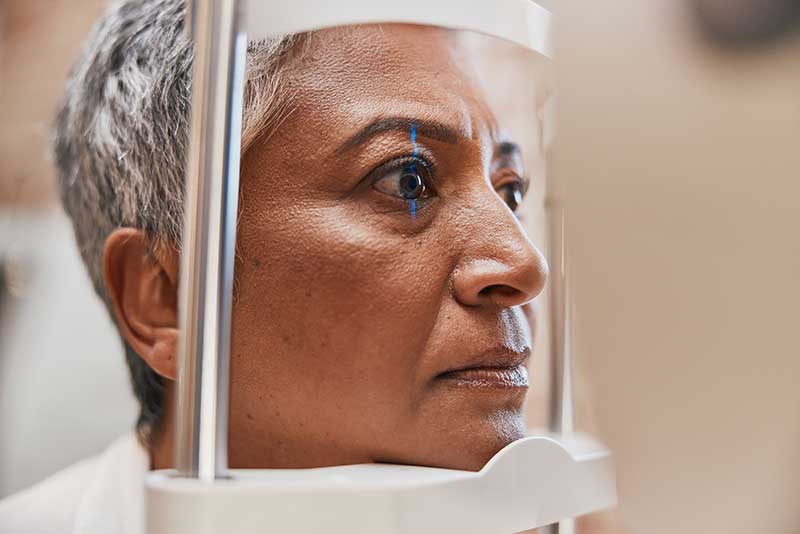Glaucoma Risk Factors Genetics, Environment, and Lifestyle
 Glaucoma is one of the most common causes of irreversible blindness globally, impacting millions of individuals. It is a set of eye disorders that cause damage to the optic nerve, which is essential for clear vision. This injury is frequently caused by extremely high pressure in the eye. Despite its frequency, many people are unaware of the risk factors for the condition. Understanding these factors can aid in the early detection and management of the illness. This blog looks at the genetic, environmental, and behavioral variables that raise the risk of developing glaucoma.
Glaucoma is one of the most common causes of irreversible blindness globally, impacting millions of individuals. It is a set of eye disorders that cause damage to the optic nerve, which is essential for clear vision. This injury is frequently caused by extremely high pressure in the eye. Despite its frequency, many people are unaware of the risk factors for the condition. Understanding these factors can aid in the early detection and management of the illness. This blog looks at the genetic, environmental, and behavioral variables that raise the risk of developing glaucoma.
Genetic factors
Glaucoma typically runs in families, indicating a strong hereditary component. If a family member has glaucoma, your chances of having the ailment are greatly increased. Several genes have been identified as contributing to the early and late-onset forms of glaucoma. For example, gene alterations such as MYOC (myocilin) and OPTN (optineurin) are associated with open-angle glaucoma, the most frequent kind of the condition. Genetic testing can detect these risk factors early on, perhaps leading to preventative treatment programs.
Environmental Factors
Environmental variables influence the chance of developing glaucoma. Secondary glaucoma can develop as a result of prolonged exposure to specific substances or eye damage. A strong blow to the eye, a chemical burn, or foreign object penetration can all affect the eye’s internal structure and fluid dynamics, resulting in elevated intraocular pressure. Furthermore, corticosteroid use, particularly in eye drop form, can raise ocular pressure and is a well-documented risk factor for glaucoma.
Lifestyle Factors
Lifestyle decisions can affect the likelihood of acquiring glaucoma. A variety of lifestyle influences have been found, including:
- Physical Exercise: Regular, moderate exercise, such as running or walking, can help lower ocular pressure. However, intense sports that require head-down positions might raise intraocular pressure.
- Diet: There is mounting evidence that a nutritious diet can help treat or prevent glaucoma. Foods high in antioxidants and important nutrients are good, however excessive use of caffeine might temporarily raise ocular pressure.
- Smoking is associated with greater eye pressure and decreased blood flow to the optic nerve, which increases the risk of optic nerve injury.
- Sleep Position: Sleeping with your head up can lower intraocular pressure compared to a flat sleeping position, which may be advantageous for glaucoma patients.
Age and ethnicity
Older persons are more likely to get glaucoma. The disease is more common among people over the age of 60. Furthermore, ethnicity has a vital influence; people of African, Asian, and Hispanic heritage are more likely to acquire glaucoma. African Americans, in particular, are more prone to acquire glaucoma at a young age and have more severe instances than Caucasians.
Regular screening is a key prevention strategy
Given glaucoma’s insidious progression, regular eye exams are critical for early detection, particularly for individuals at higher risk. Comprehensive eye exams are recommended every one to two years for those over the age of 40, and once a year for those over the age of 60 or those with high risk factors.
while some risk factors, including as genetics and age, cannot be changed, knowing environmental and lifestyle risks can aid in the management or even prevention of glaucoma. Maintaining a healthy lifestyle, avoiding smoking, and getting regular eye exams can all help to keep your vision healthy. The fight against glaucoma relies heavily on raising awareness and education about these risk factors.



